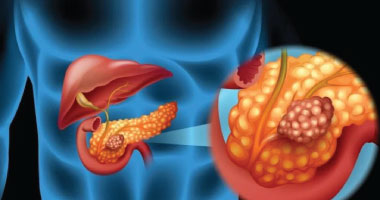Are there any home remedies for steatorrhoea?
What is steatorrhoea?
Steatorrhoea is the presence of too much fat in the stool. This is why it is also known as fatty stool. This could be due to mal-absorption, which means the body is either not absorbing nutrients properly, or not making the enzymes or bile needed to digest food effectively.
Steatorrhoea symptoms
Steatorrhoea symptoms depend on the severity.
For mild or short-term cases, the steatorrhoea symptoms displayed may include:
- Feeling of discomfort.
- Foamy, frothy or mucous-filled stool.
- Foul-smelling stool.
- Diarrhoea, or loose or runny stool that is more compact than normal.
- Light-coloured stool, often light brown, green, orange or yellow.
- Floating stool.
- Stool appearing to be covered in a thick, greasy film.
- Stool difficult to flush away
- Abdominal pain, cramp, bloating, and gassiness.
- Heartburn and indigestion.
- General exhaustion.
- Minor muscle, bone and joint ache.
For severe or chronic cases, steatorrhoea symptoms include:
- Malnutrition and dehydration.
- Chronic loose, heavy, foul-smelling and fat-filled stool.
- Anaemia.
- Muscle weakness and pain.
- Chronic exhaustion.
- Weight loss.
- Fever.
- Reduced growth rate (in children).
- Vision problems.
- Skin conditions.
- Neurological conditions.
- Osteoporosis.
Steatorrhoea causes
Steatorrhoea suggests problems with the digestive system, such as the inability to break down food adequately. This may prevent the body from absorbing the useful parts of the foods consumed, plus dietary fat.
Some of the reasons for this may include:
- Cystic fibrosis.
- Chronic pancreatitis.
- Exocrine pancreatic insufficiency (EPI).
- Biliary atresia.
- Celiac disease.
- Crohn’s disease.
- Lactose intolerance.
- Whipple disease.
Steatorrhoea diagnosis
Steatorrhoea diagnosis is carried through series of analysis.
- Review of medical history and symptoms.
- Qualitative test: This measures the number of fat globules (drops) in a stool sample.
- Quantitative test: To determine the amount of fat in stools. In a quantitative test, stool samples are collected over a period of 2 to 4 days. All these stool samples are then studied to determine the total amount of fat in each day’s stool.
- D-xylose absorption test: To ascertain mal-absorption. The test measures the amount of D-xylose in the blood or urine.
- Other tests may include specific tests to check for celiac disease.
Steatorrhoea treatment
Steatorrhoea treatment is based on the treatment of the underlying cause or causes of the condition.
For diet-related steatorrhoea causes, the treatment is typically a matter of avoiding the foods that trigger symptoms.
For celiac disease caused steatorrhoea, the most effective treatment is avoiding wheat and other foods that contain gluten. Exocrine pancreatic insufficiency (EPI) is usually treated with medications, dietary changes and nutrition supplements. A treatment plan, however, will depend on the symptoms and the cause of EPI.
For cystic fibrosis or chronic pancreatitis steatorrhoea, medications and lifestyle changes are necessary.
Some of the medications used to treat and prevent steatorrhoea include:
- Intravenous fluids to restore electrolytes and stop dehydration.
- Anti-diarrheal medications,
- Pancreatic enzyme replacement therapy (PERT).
- Proton-pump inhibitors (PPIs).
FAQs
What are potential complications of steatorrhoea?
Steatorrhoea occurrence may be due to serious diseases. Failure to seek treatment, therefore, can result in serious complications and permanent damages. Some of these include:
- Anaemia.
- Frequent serious or opportunistic infections.
- Growth impairment in infants and children.
- Intestinal blockade and rupture of the intestinal wall.
- Poor nutrition owing to vomiting, diarrhoea or a decreased desire to eat
- Spread of infection and/or cancer.
- Surgery; for removal of some parts of the digestive tract due to a serious infection or malignant condition.
What foods and drinks are likely to be steatorrhoea causes?
Some of the common foods and drinks known to be steatorrhoea causes include:
- Nuts, particularly whole nuts with the skin or shell intact.
- Oily, high-fat fish. For example, escolar or oil fish, which may be mislabelled butterfish or fatty tuna.
- Excessive alcohol consumption.
- Artificial fats.
- Naturopathic or essential oils.
- Palm kernel and coconut oil.
- Whole wheat products.
What are the components of stool?
Stool contains a mixture of undigested nutrients such as proteins, fibres, salts, bacteria, fats, mucus and various cell linings.
Are there any home remedies for steatorrhoea?
Some home remedies tips for treating and preventing steatorrhoea include:
- Stay hydrated.
- Reduce dietary fibre intake.
- Reduce dietary fat intake.
- Quit smoking and alcohol use.
- Reduce or limit potassium oxalate intake.
- Increase dietary intake of fat soluble vitamins through taking nutritional supplements, like vitamins A, D, E and K.
- Increase dietary intake of vitamin B12, folic acid, iron, magnesium and calcium.
The information provided in this blog is for educational purposes only and should not be considered as medical advice. It is not intended to replace professional medical consultation, diagnosis, or treatment. Always consult with a qualified healthcare provider before making any decisions regarding your health. Read more

